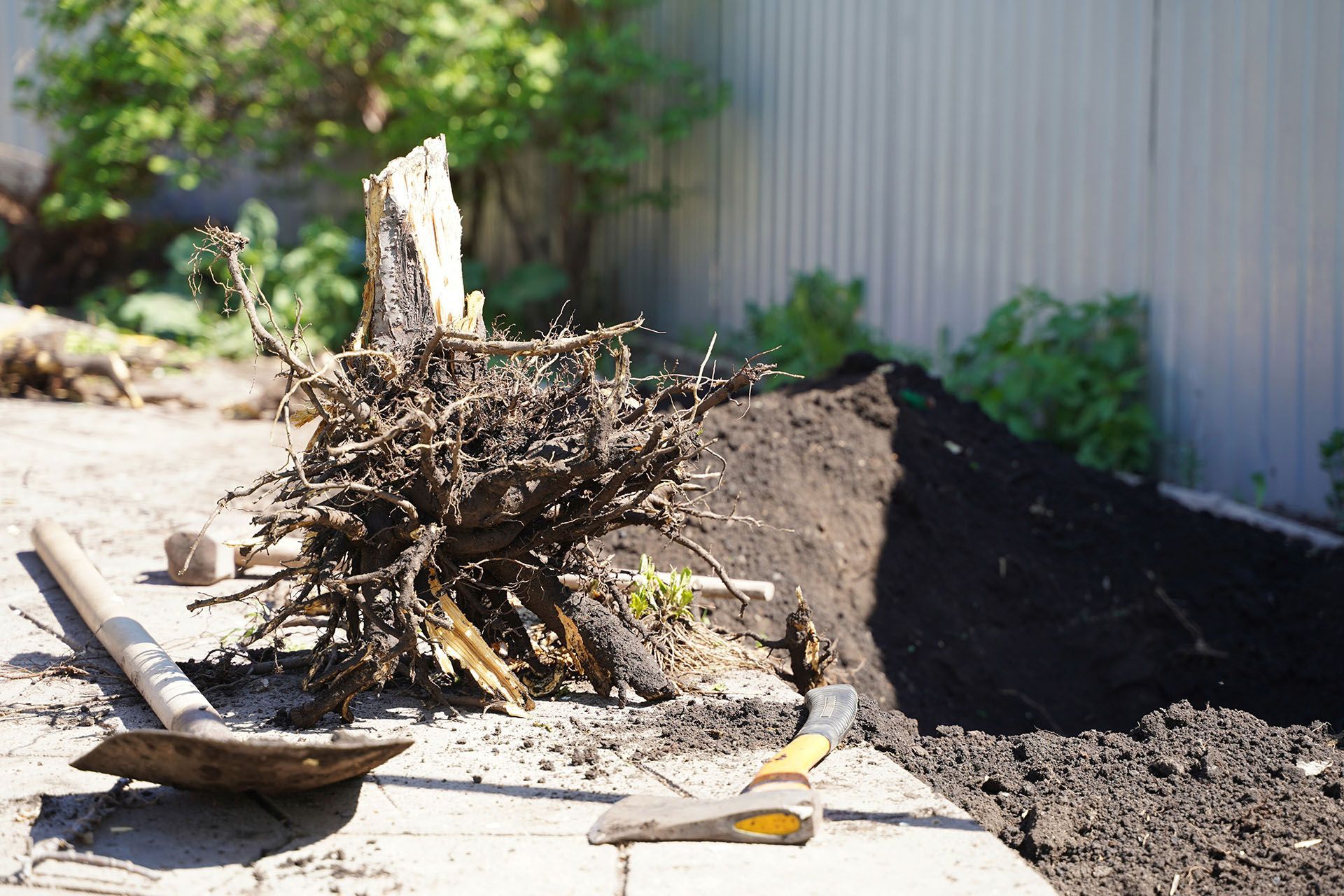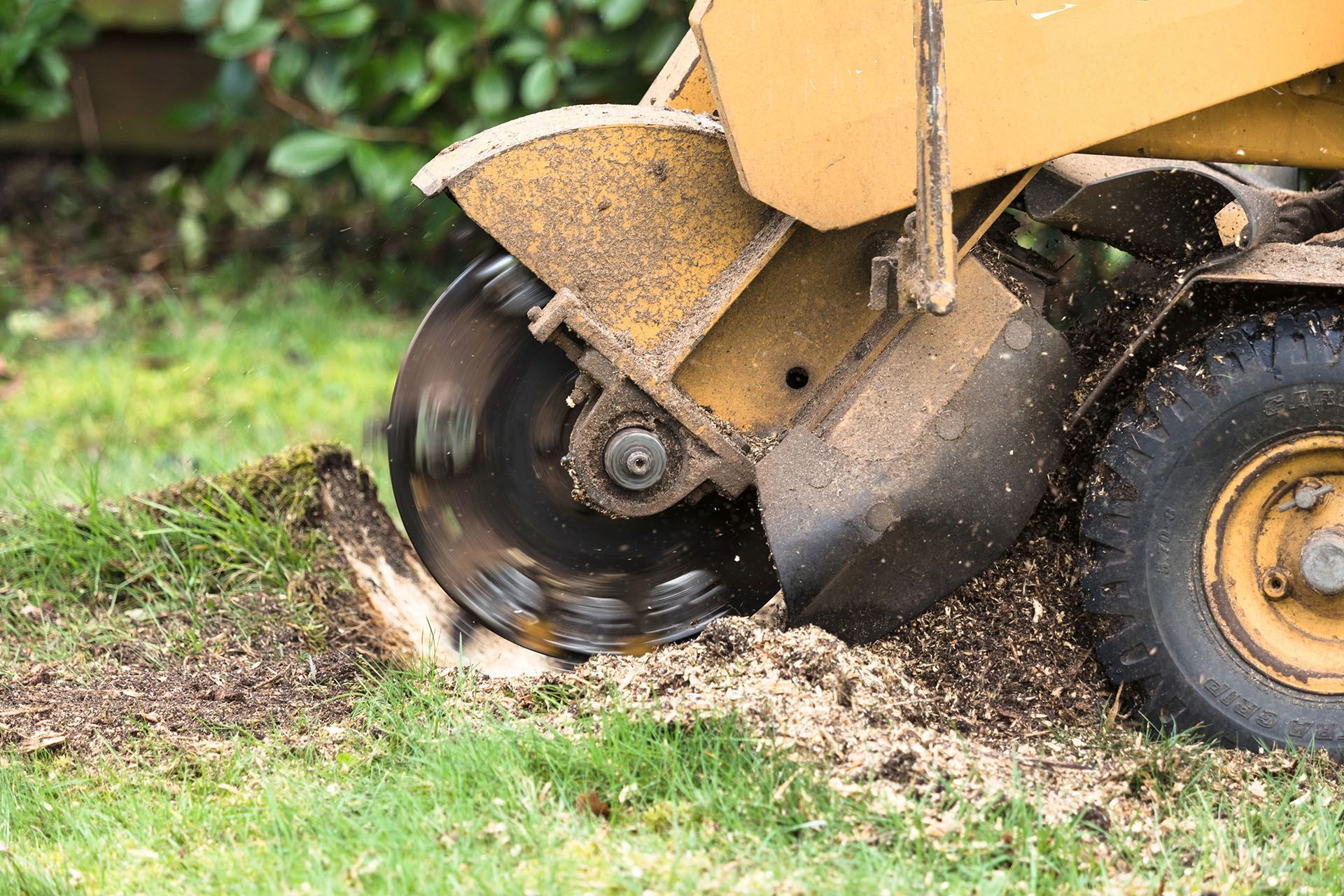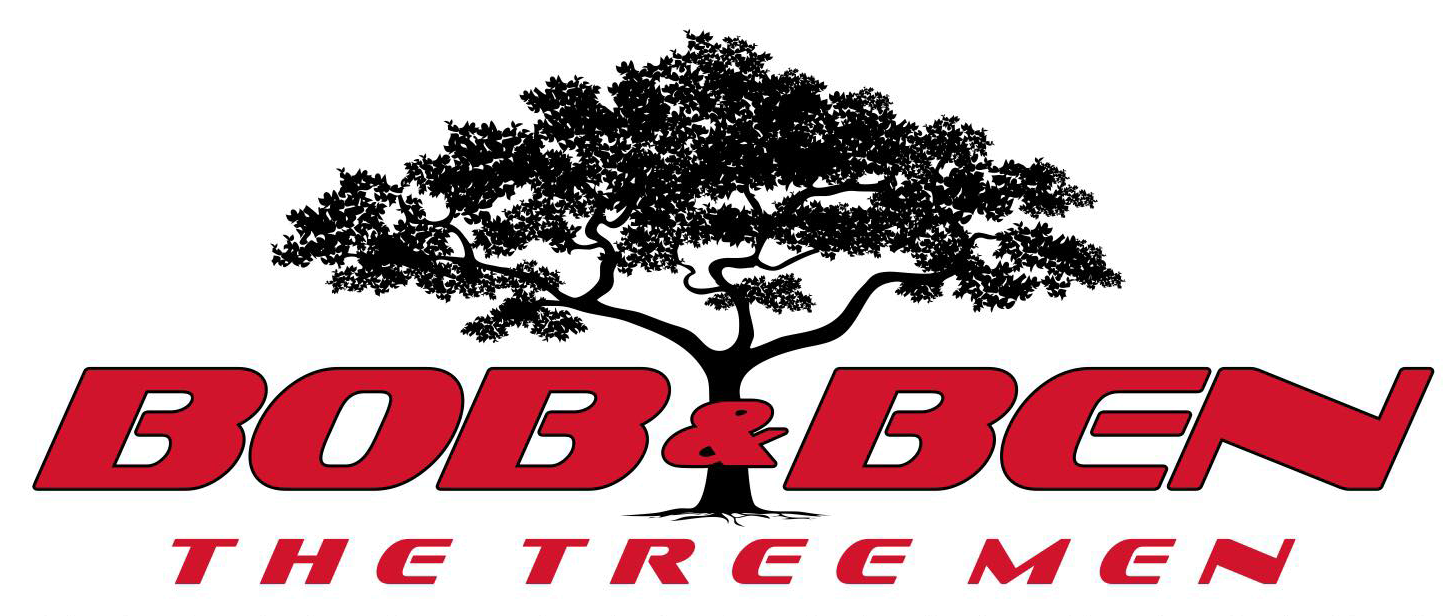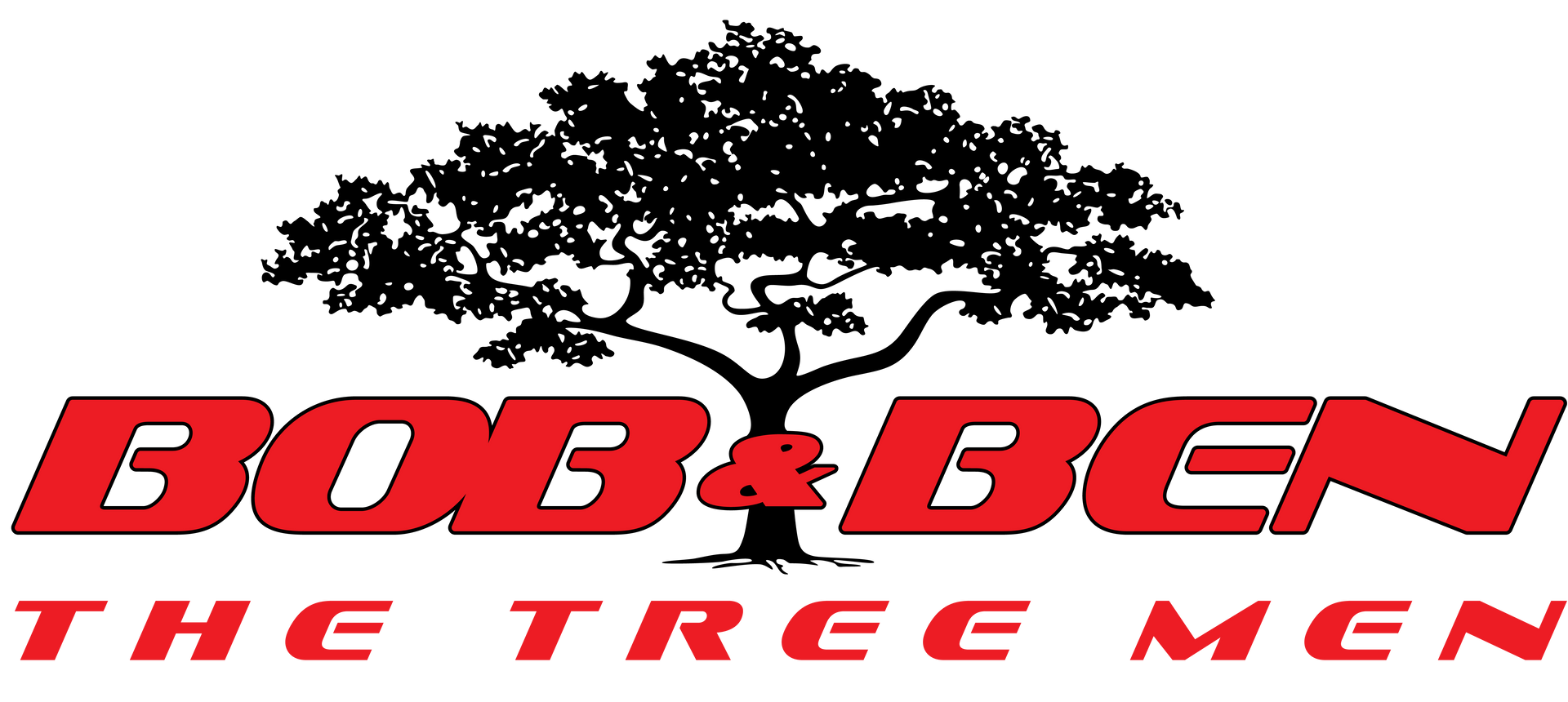How Do You Remove a Tree Stump?
If you’ve ever tried to deal with a leftover tree stump, you’ll know it’s more than just an ugly reminder of the tree that used to be there. Stumps can take up space in your yard, become a tripping hazard, get in the way of mowing or landscaping, and even attract pests or fungus if left too long.
At first glance, you might think it’s just a matter of digging it out or hacking at the tree roots, but many homeowners quickly discover it’s a lot tougher than expected. In this post, we’ll look at the different do-it-yourself (DIY) methods for tree stump removal, from digging and chemical treatments to burning and grinding, along with what they involve in terms of tools, time, risks, and effectiveness.
We’ll then compare those options with professional tree stump removal, and show why calling in the experts often saves time, money, and headaches in the long run, especially under Australian conditions.
DIY Tree Stump Removal Methods
Tackling a tree stump yourself can save money and give a sense of accomplishment. DIY methods range from brute-force digging to chemical decay and controlled burning. Each approach has its own requirements and pitfalls. Before you begin, always consider the tree stump’s size, your physical capabilities, and any local regulations (for example, Australian councils may regulate burning or the use of certain chemicals). Let’s break down the common DIY tree stump removal techniques.
Manual Removal (Digging Out the Stump)

Taking on a tree stump yourself can save money and feel rewarding, but it’s hard work. One of the most common DIY approaches is manual digging and cutting, which relies on determination and basic tools.
- Tools you’ll need: A shovel, mattock or pickaxe, axe or saw, and possibly a pry bar or sturdy timber for leverage. Gloves, boots, and eye protection are must-haves.
- How it works: Dig around the tree stump to expose the roots, then cut through them with your axe or saw. Work in a circle, loosening the tree stump as you go, and use a lever or pry bar to rock it free. Once removed, fill the hole with soil.
- Time and effort: It can take a few hours to remove a tree stump that is small, but larger ones may require days of digging and chopping. It’s a physically demanding job and not always realistic for deep-rooted or mature trees.
- Risks and challenges: Expect sore muscles, blisters, or even injury if tools are mishandled. Always check for underground utilities before digging, and have a plan to dispose of the heavy stump once you remove a tree stump. Some trees, like eucalypts, can regrow if roots are left behind.
- Effectiveness: When done properly, manual removal completely eliminates the tree stump without chemicals. It’s cost-effective and eco-friendly for small stumps, but often impractical for larger ones. Pulling stumps with vehicles or winches is risky, and many people eventually turn to professional stump grinding for safety and efficiency.
Chemical Decay (Using a Chemical Stump Remover or Epsom Salt)
If heavy digging isn’t for you, chemical removal is a low-effort way to break a tree stump down over time. This method speeds up natural decay so the wood softens and can be chopped out later.
- How it works: Most tree stump removal products contain potassium nitrate, which feeds decay organisms and helps the tree bark and wood fibres break down more quickly. A common alternative is Epsom salt, which dehydrates the wood. Herbicides may also be applied to stop regrowth, though they won’t speed up rotting process.
- What you’ll need: A drill and large bit, the chemical or salt, gloves, eye protection, and ideally a plastic tarp to cover the stump.
- Steps: Drill holes (deep ones) across the tree stump, pour in the chemical or epsom salt (and water if required), then cover the tree stump to keep rain out and pets or wildlife away. Over the following weeks or months, the wood will begin to soften.
- Timeframe: Expect 6–8 weeks for small stumps to start rotting, though larger or hardwood stumps may take many months.
- Follow-up: Once softened, the tree stump can be broken apart with an axe, dug out more easily, or in some cases, burned (where permitted).
- Considerations: Chemicals must be handled carefully. Spills can harm nearby plants, soil, or waterways, and treated tree stumps can be dangerous to pets and wildlife. Always check product safety guidelines and local regulations before use.
- Effectiveness: This is a simple, “set and forget” method, best for tree stumps that aren’t urgent to remove. It works well in hard-to-reach spots, but it doesn’t clear roots and may not fully eliminate large stumps without extra effort.
Burning the Stump
Burning might sound like a quick fix, but in reality, it’s one of the riskiest and least recommended methods of tree stump removal. While the idea is straightforward: reduce the tree stump to ash. It’s slow, hazardous, and heavily restricted by law in fire-prone regions like Australia. Even when legal, it can smoulder for hours, produce unpleasant smoke, and risk spreading underground through roots. For most homeowners, burning isn’t worth the danger or the hassle.
Burning a stump might seem tempting, but it’s rarely a good idea. It requires drilling holes, adding fuel source like kerosene, fuel oil or charcoal, and keeping a fire smouldering for hours, all while you monitor it constantly to stop it from spreading underground. Even with precautions, the smoke can be unpleasant, and the risk of an uncontrolled fire is high.
In many areas, councils heavily restrict or outright ban open burning, especially during fire season. Permits are often required, and the rules are strict for good reason. Attempting this near homes, fences, or in dry, windy conditions can be dangerous, and neighbours are unlikely to appreciate the smoke drifting across their property.
While a completely dry tree stump may eventually burn down to ash, green or large stumps often won’t, leaving you with a half-charred mess. Given the risks, regulations, and unreliable results, burning is generally not worth the trouble if you want to remove a tree stump, and we don’t recommend it for most situations.
DIY Stump Grinding (Renting a Stump Grinder)

Stump grinding is the method most professionals use, but you can also rent a grinder for DIY stump removal removal. The machine’s rotating blade chews the stump into woodchips, clearing it below ground level. It’s far quicker and less back-breaking than digging, but comes with hire costs, safety risks, and a learning curve.
- What it is: A stump grinder is a heavy machine with a cutting wheel that grinds stumps and nearby roots into mulch. Rental models range from push-type machines to trailer-mounted units.
- What you’ll need: A stump grinder from an equipment hire outlet, plus proper protective gear like gloves, boots, eye and ear protection, and possibly a trailer or delivery service for transport. A shovel and rake help with cleanup.
- How it works: Clear the area of rocks, then position the stump grinder at the stump’s edge. Lower the wheel into the wood and sweep side to side, shaving it down in layers until it’s about 20–30 cm below ground. This leaves a hole filled with mulch that can be raked out or reused.
- Time and cost: A medium stump might take about an hour for a first-time user, compared to days of digging. Hire rates in Australia usually run $150–$300 per day, plus fuel or delivery. For multiple stumps, it can be cost-effective, but for just one small stump, it may rival the price of hiring a professional to do the stump grinding work.
- Safety considerations: Stump grinders are powerful and dangerous if misused. Flying debris, machine kickback, and hidden underground hazards like rocks or pipes all pose risks. Keep bystanders away, wear full protective gear, and follow instructions carefully.
- Effectiveness: Stump grinding removes the stump and crown effectively, preventing most regrowth. Some tree roots remain underground, but they typically rot away. The area can then be backfilled and replanted.
Professional Tree Stump Removal Services
Hiring a professional arborist in Sutherland Shire is usually the safest and most reliable way to remove a tree stump fast. With high-powered grinders and years of experience, a crew can clear in minutes what might take a homeowner days.
Speed and equipment
Professionals use industrial-grade stump grinders far stronger than rental units, along with specialised tools for tight spaces or oversized stumps. Whether in a small garden or a commercial site, they can complete the job quickly and thoroughly, often in under an hour per stump.
Safety and insurance
Trained operators reduce the risks of injury or property damage. They arrive with protective gear, the skill to handle hazards, and insurance coverage. This gives peace of mind that you won’t be liable if something goes wrong.
Thoroughness and finish
Experts grind deep enough to prevent regrowth, backfill holes, and can remove or repurpose woodchips so you’re not left with a mess. They may also apply treatments for invasive species or advise on pests such as termites, leaving the site ready for replanting or development.
Regulations and environment
Professionals know local laws and won’t risk illegal burning or unsafe practices. They dispose of material responsibly, comply with quarantine rules if wood is diseased, and avoid chemicals that could damage soil or nearby plants.
Cost vs. value
While prices vary ($100–$200 for a small stump to several hundred for larger jobs), the expense often matches or beats DIY when rental fees, gear, time, and effort are factored in. For multiple stumps or bundled tree services, hiring pros can be especially cost-effective.
Bottom line
Professional tree stump removal saves time, avoids risk, and guarantees lasting results. For big or multiple stumps, or if you simply don’t want the hassle, calling in the experts is almost always the smarter choice.
DIY vs Professional: Which Is Right for You?
Both DIY and professional tree stump removal have their merits, and the best choice depends on the size of the stump, your timeframe, budget, and comfort with physical labour.
Small stumps, such as those from shrubs or young trees, can often be managed at home with digging or chemical methods, though these approaches require effort or patience. Old or large tree stumps or multiple stumps are usually far too stubborn for DIY, and a professional with a powerful grinder can remove them quickly and effectively.
Time is another factor. DIY methods may take weeks or even months, while a tree service can often clear a stump in a single visit, which is especially valuable if you have deadlines for landscaping or construction.
Costs also vary. DIY may be cheaper if you already have tools, but equipment hire, safety gear, and the risk of damage or injury can make it less economical than a professional quote, which usually includes the full service to remove a tree stump with speed, thoroughness, and cleanup.
Safety and expertise matter too. Unless you are confident handling heavy tools and yard work, attempting large-scale DIY stump removal can put you at risk, whereas professionals have training, protective gear, and insurance. In Australia, local regulations also play a role: chemical use, burning, or removing native species may be restricted, and professionals are generally across these rules.
Takeaway
DIY suits small, accessible stumps if you have the time and energy, but for large, deep-rooted, or urgent jobs, hiring professionals to remove a tree stump is often worth the cost. Beyond machinery, experts bring skill, safety, and compliance know-how, leaving you with a clean, stump-free space without the hassle or uncertainty.
Ready to say goodbye to that pesky stump? Get in touch with our team today for fast, safe, and professional tree stump removal. We’ll give you clear advice, a fair quote, and the peace of mind that the job will be done right the first time.

Over 25 years ago, Bob and Ben planted the seeds of what would become one of the most popular and trusted tree service businesses in the Sutherland Shire.
Get your FREE tree lopping quote today!
Let Bob and Ben The Tree Men get to the root of all your tree problems. Contact us today to receive your personalised quote.





